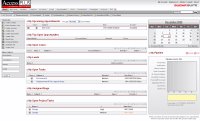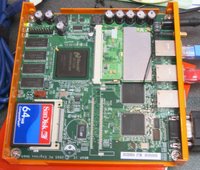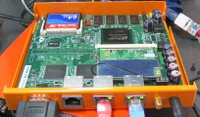Two such applications that I'm playing with at the moment are Zimbra and SugarCRM.
Zimbra is pushing e-mail and collaboration software to new heights. They're taking what Google started with their Gmail and Blogger and merging it with current collaboration tools and methods to come up with a modern, scalable and cross-platform suite that promises to change the way we communicate in the work place.
I have installed and set up the latest version (Beta 2) as my mail host for naturalnetworks.net. So far its going quite smoothly, however there are issues getting it to work normally through a firewall with 1-to-1 NAT, it's pretty insistent upon its IP addressing and DNS. I read through the Zimbra forums and it would appear that the main issue would be with the way it uses IPTables to redirect ports - it might be getting confused and could be double NATing in a way.
The next release won't depend on the firewall, instead it will startup with root permissions and then suid to a user - similar to many other network applications. The reason for doing this is because only the root user is allowed to open ports below 1024. Another positive reason for not using IPTables is because only Linux has it, FreeBSD and others don't have it, or normally don't use it.
Update: I have since upgraded to the 'M2' release of Beta 2 and the issues I was having with the remote access have all been resolved. M2 has added a few more nice tweaks to the web user interface and various other additions listed on the Zimbra forums in the announcement.

Zimbra Web Client Interface
CRM (Customer/Client Relations Manager) software has been around for quite sometime now. CRM software is usually designed for use by sales people and perhaps marketing as well - probably because traditionally they're the ones who are continuously facing the client. However many other features have crept into the standard recipe for a good CRM package, including interfaces for support/technical staff and project management. This is expected since things have shifted from a sell and forget attitude to developing a continuing relationship one.
This brings me to SugarCRM, a suite of modules that make up a complete CRM package. I'm using the free to download and use Open Source version - the main differences between the free to use one and the pay to use is support and a few other little things that make its integration with other existing systems easier. I'm not a sales person but I did do a bit of marketing and project management study while at Uni and Tafe - so from what I can gather from the suite is that its pretty comprehensive and sticks to the simple bare bones approach to getting the job done. If you want more detailed/complex structuring of information then it wouldn't be too difficult to modify it - just need to find a PHP developer (most decent Web Developers should know it).

SugarCRM Interface



